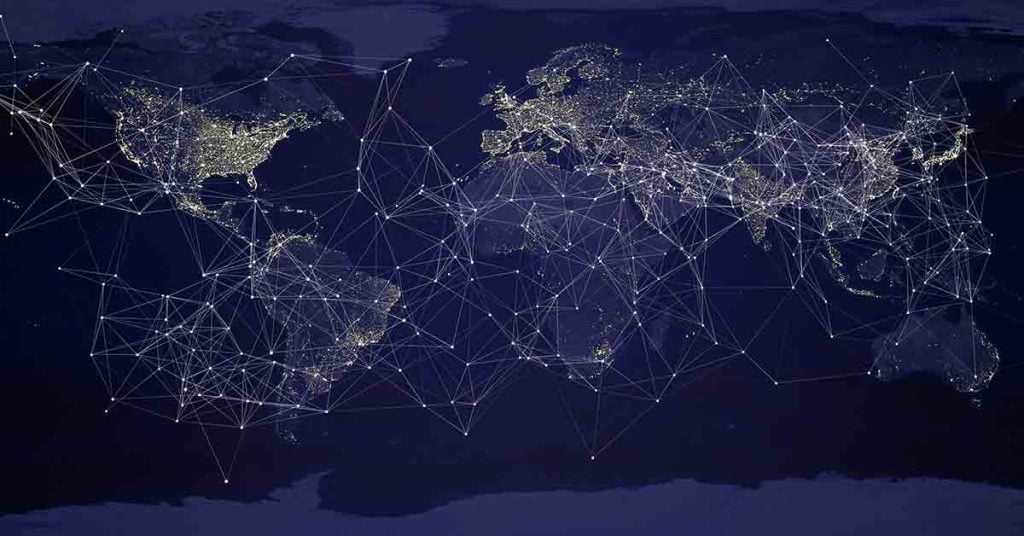Websites play a crucial role in business success and speed and performance are of utmost importance. Slow-loading web pages can drive away potential customers and harm your brand’s reputation. This is where Content Delivery Networks (CDNs) come into play. CDNs have revolutionised the way web content is distributed worldwide, enhancing user experience and ensuring faster delivery of web content. In this article, we will delve into the magic of CDNs and explore how they can benefit your website. As an authoritative web hosting and domain registration company, MCloud9 understands the significance of CDNs and is here to guide you through the intricacies of this powerful technology.
Table of Contents
What Is a CDN (Content Delivery Network)?
CDNs, or Content Delivery Networks, are a distributed network of servers strategically placed in data centres around the globe to distribute content geographically. Acting as intermediaries between the origin server and end users, CDNs ensure that website content is delivered swiftly and reliably. By storing cached copies of static web content in geographically distributed edge servers, CDNs significantly reduce load time and improve user satisfaction for website visitors. Let’s break down the components and functioning of CDNs to gain a deeper understanding.
Why Is a CDN Important for Website Performance?

The primary purpose of a content delivery network is to enhance the visitor experience by reducing network traffic and improving website load times when users access content on a website. Slow-loading websites can drive away visitors, resulting in lost opportunities and decreased revenue. CDNs come to the rescue by minimising latency and optimising bandwidth consumption. By delivering content from the nearest edge server to the user, CDNs reduce the distance data travels, resulting in speedy content delivery and a seamless browsing experience. Moreover, CDNs are equipped to handle traffic spikes and mitigate the impact of DDoS attacks, ensuring uninterrupted access to your website.
The Evolution of CDNs
CDNs have come a long way since their inception. The concept of CDNs emerged in the late 1990s as websites began to experience increased traffic and demand for quicker content delivery. Originally designed to deliver static content efficiently, such as images, JavaScript files, and CSS files, they have evolved into sophisticated networks capable of handling dynamic content, such as personalised web pages and video streaming. Modern CDNs leverage advanced caching techniques, intelligent routing algorithms, and an extensive network of servers to meet the growing demands of today’s internet landscape. Today, CDNs have become an essential infrastructure component for businesses of all sizes, offering a range of services to optimise content delivery.
How Does a CDN Work?
CDNs operate by utilising a grid of servers strategically positioned at the network edge, closer to end users. When a user requests content from a website that utilises a CDN, the request is intercepted and routed to the closest point of presence or edge server within the CDN network. This server, known as an edge server, is located in close proximity to the user, minimising response time.
CDNs operate by utilising a grid of servers strategically positioned at the network edge, closer to end users
When the edge server receives a content request, it checks if the requested content is available in its cache. CDNs use caching servers to store static website content, such as images and scripts. If the requested content is available in the cache, the edge server delivers it directly to the user, without having to retrieve it from the origin server. This caching mechanism speeds up content delivery and reduces the load on the origin server.
If the requested content is not available in the cache, the edge server sends a request to the origin server, which is the server where the website is hosted. The origin server responds to the CDN with the requested content, and the CDN delivers it to the user. The CDN also stores a copy of the content in its cache for future requests, improving the overall efficiency of content delivery.
Benefits of CDNs
CDNs offer numerous benefits that contribute to enhance the performance of websites and user experience. Let’s explore some of the key advantages:
- Reduced Latency and Faster Content Delivery: By serving content from servers closest to the user’s location, CDNs minimise latency and deliver web content with lightning-fast speed. This ensures a smooth browsing experience and keeps visitors engaged.
- Improved Scalability and Traffic Handling: CDNs are designed to handle high web traffic and sudden spikes effectively. With a distributed web of servers, CDNs can efficiently manage increased demand without compromising performance or availability.
- Enhanced Global Reach: CDNs have a geographically distributed network, allowing content to be delivered to users worldwide. This global reach ensures that website visitors experience fast load times regardless of their location.
- Increased Reliability and Uptime: CDNs act as a buffer between the user and the origin server. If the origin server goes down or experiences issues, the CDN can continue to serve cached content, ensuring uninterrupted access to the website.
- Optimised Bandwidth Consumption: CDNs reduce the bandwidth consumed on the origin server by serving content that is cached from the edge servers. This helps to lower costs associated with data transfer and improves the overall efficiency of the website.
Examples of CDN Platforms
There are several leading CDN providers in the market, each offering unique features and services. Some popular CDN platforms include:

Cloudflare: Cloudflare is a leading CDN service provider, powering over 13.5 million sites, known for its robust security features and global network. They offer a range of services, including DDoS protection, content optimisation, and load balancing. Cloudflare CDN improves the user experience by delivering web content quickly and efficiently to users worldwide.

Akamai Technologies: Akamai is one of the pioneers in the CDN industry, offering a comprehensive suite of content delivery and optimisation services. They have a vast array of servers worldwide, ensuring fast and reliable content delivery.
Content Distribution: Latency Reduction and Bandwidth Optimisation
CDNs are capable of delivering various types of content quickly, including static and dynamic content. Let’s explore how CDNs optimise content delivery and contribute to latency reduction and bandwidth optimisation:
- Static Content Delivery: CDNs excel at caching and delivering static content such as images, CSS files, and JavaScript files. By storing these files on edge servers, CDNs can serve them quickly to users, reducing the load on the origin server and improving page load times.
- Dynamic Content Delivery: CDNs have evolved to handle dynamic content efficiently. With advanced caching techniques, CDNs can serve personalised and dynamic web pages, ensuring a seamless user experience. They dynamically fetch and cache content from the origin server, minimising latency and optimising bandwidth consumption.
FAQ for What Is a CDN
What is an edge server?
An edge server is a server located in a CDN network that is closest to the user. It is responsible for responding to requests for content, caching static data, and sending content to website users.
Can I use multiple CDN servers?
Yes, you can use one or more CDN servers in a network to ensure redundancy and reliability. The number of servers needed will depend on the size of the website and the amount of traffic it receives.
What kind of content is stored on a CDN?
Static data such as images, videos, and scripts are typically stored on a CDN. Dynamic data such as user-generated content usually requires a direct connection to the website’s host server.
Which services do CDNs offer?
CDN providers offer a variety of services including content caching, website traffic management, security features, and analytics tools.
Can I use a CDN instead of a web server?
No, a CDN cannot replace a web server. It is designed to work in conjunction to deliver content to users as quickly and efficiently as possible.
In Conclusion
In conclusion, CDNs are the unsung heroes of the internet, revolutionising the way web content is distributed globally. By leveraging a network of strategically placed edge servers, CDNs ensure faster content delivery, enhanced user experiences, and improved website performance. As a website owner, leveraging a CDN is a wise choice to optimise your web presence, reach a wider audience, and provide a seamless browsing experience. Embrace the magic of CDNs and unlock the true potential of your online endeavours with MCloud9’s reliable hosting solutions.


